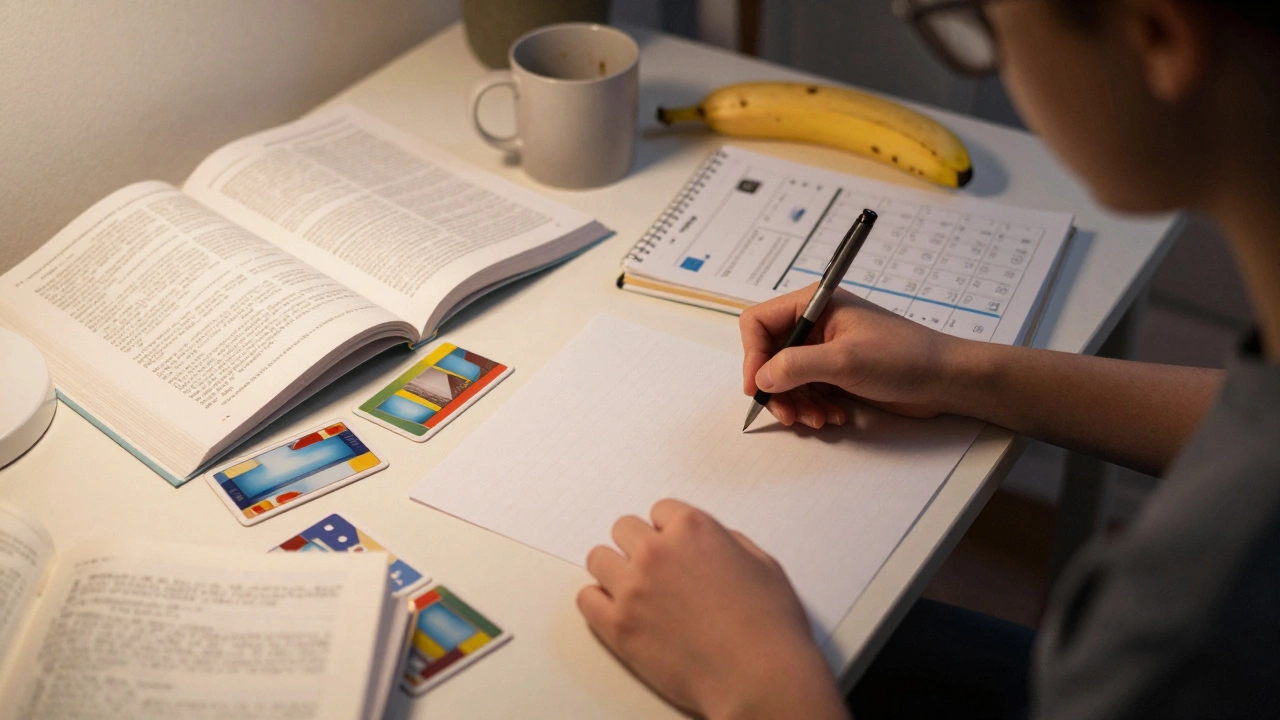Practical GCSE Revision Guide: Study Smarter, Not Harder
Got a pile of past papers and a ticking clock? You’re not alone. Most students ask how many hours they need each day and what the best study method is. The good news? You don’t need to cram endless notes. A clear plan, a few proven tricks, and the right mindset can push your grades up fast.
Set a Realistic Revision Schedule
First step is to map out your time. Research shows that about three hours of focused revision a day works for most learners, but only if you split it into chunks. Try a 45‑minute sprint, a 10‑minute break, then repeat. This keeps your brain fresh and stops the "I’m too tired" slump.
Use a simple table or a free app to block out subjects. Start with the topics you find hardest – tackling them first gives you a confidence boost for the easier material later. Make sure each block ends with a quick recap; writing a one‑sentence summary cements the info.
Use the 1247 Rule for Better Memory
The 1247 rule is a quick hack: review a new fact after 1 hour, again after 2 days, then after 4 days, and finally after 7 days. This spaced repetition aligns with how our brain stores long‑term memory. When you finish a chapter, jot down key points on flashcards and schedule the 1247 reviews. In a week you’ll notice the material feels far more familiar.
Combine this with active recall – close the book and try to answer questions out loud. It’s easier to spot gaps when you’re forced to retrieve info rather than just reread it.
Fuel Your Brain on Test Day
What you eat matters more than you think. Skip sugary snacks that cause a crash and go for a balanced breakfast: whole grain toast, a boiled egg, and some berries. This combo gives steady energy, improves focus, and keeps your stomach calm during the exam.
Avoid caffeine right before the test – a small cup is fine, but too much can jitter you. Hydration is key too; a glass of water can clear mental fog.
Mental Prep: Stay Calm and Confident
Stress can sabotage even the best preparation. Spend five minutes each evening visualizing a successful exam – picture yourself reading questions calmly and answering confidently. Pair this with deep‑breathing exercises: inhale for four seconds, hold two, exhale four. Doing it before you start a study session signals your brain it’s safe to focus.
If you catch yourself spiraling, take a short walk or stretch. Physical movement resets your nervous system and improves blood flow to the brain.
Follow these steps, stick to the schedule, and you’ll walk into the GCSE hall feeling prepared, not panicked. Remember, consistent, active study beats last‑minute cramming every time.
Best Way to Revise for GCSE: Proven Methods That Actually Work
Learn the most effective ways to revise for GCSEs with proven techniques like active recall, spaced practice, and past papers. Avoid common mistakes and build a revision plan that actually boosts your grades.
Which GCSE Subject Is the Toughest? A Deep Look at the Hardest GCSE Subjects
Explore which GCSE subjects are truly the toughest, why they rank that way, and get practical tips to master the hardest GCSE subjects for better grades.
GCSE Revision: How Many Hours Should You Study for Exam Success?
Discover the ideal number of hours to revise for your GCSEs. Unpack tips, real-life strategies, and myths around efficient exam prep so you can ace your results.
20 20 20 Rule Revision: Protect Your Eyes While Acing GCSEs
The 20 20 20 rule revision helps students avoid eye strain during long study sessions. By taking regular, timed breaks, you can boost your focus and protect your vision. This approach fits easily into any GCSE revision plan, making it easier to concentrate and remember what you learn. Discover how this simple rule can turn marathon cramming into smart, healthy studying.
Mastering GCSE Revision with the 1/3, 5/7 Rule
The 1/3, 5/7 rule is an innovative approach that helps students optimize their study sessions for GCSE exams. By understanding this method, learners can balance review and rest, ultimately boosting retention and comprehension. This article explores how to implement the rule, its proven effectiveness, and offers practical tips for students. It's a game-changer for anyone looking to improve their study habits and exam performance.
Understanding GCSE Grade 5: What It Means for Students
Exploring the implications of a Grade 5 in GCSE exams and whether it is considered a bad score. This article delves into the GCSE grading system, how a Grade 5 stands in comparison to other grades, and the potential paths students can take with this Grade. It provides insights into the educational standards and potential careers, aiming to guide students and parents in making informed decisions. Practical study tips and encouraging advice are offered to help improve or appreciate their standing.





